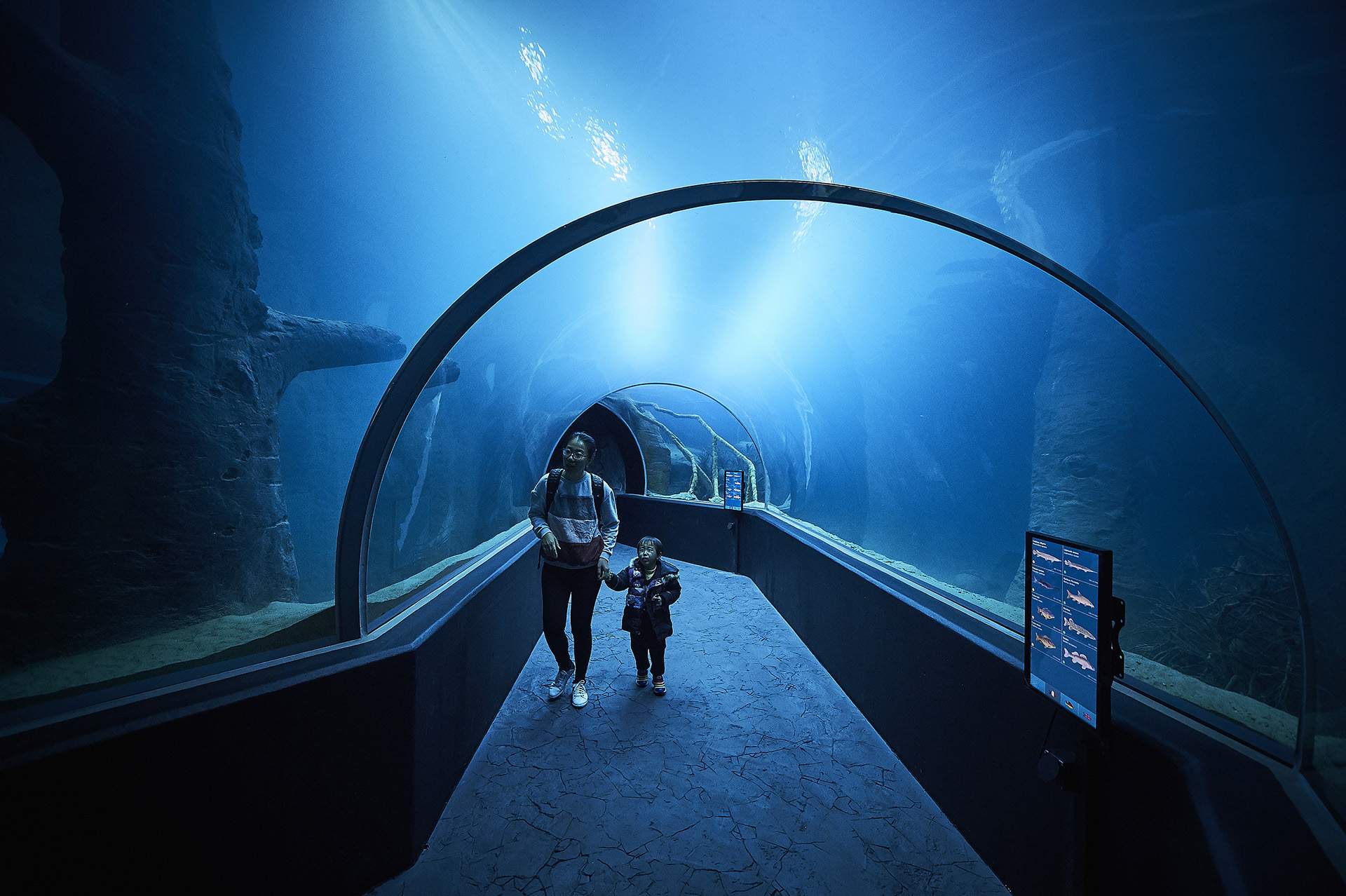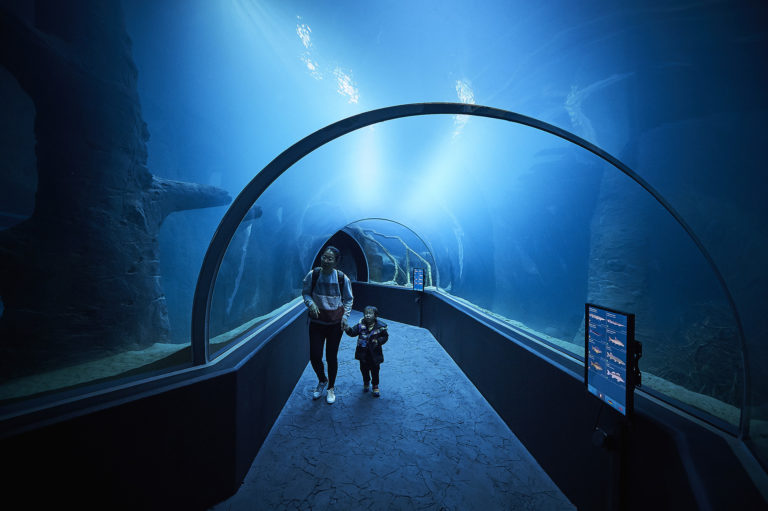This website uses cookies so that we can provide you with the best user experience possible. Cookie information is stored in your browser and performs functions such as recognising you when you return to our website and helping our team to understand which sections of the website you find most interesting and useful.


Lausanne, a town of rich and contrasted culture
An exhibition on Van Gogh, a wild night to the sounds of David Guetta, electronic rhythms under the stars, a new theatre production… In Lausanne, culture is present in all its forms throughout the whole year. With its opera house, many theatres, musical ensembles, the Swiss Film Archives, more than 20 museums and nightclubs as well as summer festivals, the town stands out as an exceptional European metropolis of art and culture.
Multiple musical tonalities
It’s worth lending an ear to this town’s multiple musical tonalities that reflect a broad diversity of styles. In the classic range, the Lausanne Opera House sports a facade as brilliant as the virtuosos who perform on its stage. Its programme includes in-house productions and world-renowned shows that feature classical or operatic singers, musicians and dancers performing to an audience often come from afar.
The Lausanne Chamber Orchestra (OCL), the cult orchestra of the Lausanne Opera House, keeps spreading its wings. In 2015, US citizen Joshua Weilerstein, one of the most promising young directors of the new generation, was appointed artistic director. The OCL covers a vast repertoire ranging from early Baroque to contemporary music and enjoys surprising its audience by rubbing shoulders with other forms of musical expression – having notably collaborated with the famous MAD CLUB to blend classical and electro music!
Alongside these institutions, popular music in all its forms reverberates across the city: jazz has its cellars and cabarets… There is world music, rock, folk, rap, techno, underground… as well as twenty or so schools, from the renowned Conservatoire de Lausanne to the school for jazz and modern music, training a young generation of musicians keen to master the whole spectrum of styles.
A vibrant and festive nightlife
Amateurs of festive atmospheres can dance until dawn in Lausanne and are spoilt for choice by the abundance of bars, nightclubs, lounges, concert halls and other music venues.
Every dedicated clubber is familiar with the MAD CLUB, located in the avant-garde Flon district. This warehouse, decorated with a giant pink condom, has dominated Lausanne nightlife since the 1980s. A veritable institution that is regularly ranked amongst the 100 best clubs in the world, the Mad plays host to the greatest electro DJs of the moment.
A stone’s throw from the Flon, Les Docks is one of Lausanne’s most popular concert venues. This huge but intimate hall features all contemporary music genres, including rock, hip-hop, funk and folk, as well as exhibitions.
Theatre to cater for all tastes
Lakeside, the Théâtre Vidy-Lausanne, a European Theatre Space, offers nearly 600 performances a year. It presents its own productions in Lausanne and abroad, as well as co-productions filled with powerful dramatic expression.
In the Malley neighbourhood, the Kléber-Méleau Theatre is an unfiltered creation space located in a former gas factory, providing a surprising contrast between industry and poetry. Dedicated mainly to classical texts but with a sprinkling of contemporary pieces, its plays also place great emphasis on music.
Tucked in behind the Cathedral, the Petit Théâtre offers a varied programme tailored to the young. Finally, the town is a hotbed of small arthouse theatres and other venues open to all theatre genres; there are more than thirty! All these reasons explain why Lausanne has the privilege of being home to La Manufacture, the Applied University of Performing Arts for Western Switzerland.
From the traditional to the innovative: captivating museums and must-see exhibitions
There is, of course, the Olympic Museum, but so many more! From contemporary design and applied arts to history, science, outsider art and photography to a brand new fine-art museum, 20 institutions invite you on a rich cultural discovery detour. Every year, 700,000 visitors explore them.
Culture lovers, make the most of the autumnal Museums Night in Lausanne and Pully! The event opens the doors of 24 cultural institutions from 2 pm to 2 am, with new and novel exhibitions and activities.
The main museums in Lausanne and Pully:
- Lausanne is home to the famous Swiss Film Archives, one of the most important institutions of its kind worldwide thanks to its collection of films, photos and documents. Its eclectic programming is an invitation to discover world and Swiss cinema.
- Far removed from conventional artistic codes, discover the surprising and sometimes disconcerting works of self-taught artists in the famous Collection de l’Art Brut (Outsider’s Art Collection), based on the collection of the “inventor” of outsider art himself, French artist Jean Dubuffet;
- Renowned far and wide, the Musée de l’Élysée is one of the largest museums dedicated entirely to photography and it enjoys experimenting with pictures as well as encouraging young creators. Every year during the month of June, the Nuit des Images (Night of Images) explores the projected image in the museum’s magnificent gardens;
- When you’re in the Olympic Capital, what could be more logical than to go and visit the museum dedicated to the Games, one of the most popular in Switzerland! The Olympic Museum presents the cornerstones of Olympism – sport, art and education – in an interactive manner;
- At Aquatis, the largest aquarium-vivarium in Europe located in the heights of the town, you can explore and marvel at the freshwater fauna and flora from the five continents;
- The mudac, Museum of Contemporary Design and Applied Arts, casts a curious, penetrating gaze on what constitutes our way of life and tries to ask pertinent – and sometimes impertinent – questions!
- You’ll experience a wide range of wonderful emotions when contemplating the major exhibitions devoted to fine arts from the Renaissance to the present day at the Fondation de l’Hermitage, a beautiful 19th-century mansion surrounded by a magnificent park;
- The Vaud Museum of Fine Arts presents several temporary exhibitions a year from its collection of 10,000 works. Currently closed, it opens on October 5, 2019, the doors of a new showcase of international format and stature at Platform 10, the new arts quarter next to the Lausanne train station;
- At the foot of the Cathedral, the former bishop’s palace has housed Lausanne’s Historical Museum for the past hundred years. Recently refurbished, it displays a new permanent exhibition with a completely redesigned scenography and narration;
- In the Musée Romain de Lausanne-Vidy, the permanent exhibition tells the story of daily life on the shore of Lacus Lemannus twenty centuries ago, as its inhabitants became accustomed to the Roman Empire’s new culture;
- The human hand is a fantastic prehension and manipulation instrument, thanks to which humans are able to materialise the ideas born in their minds; it deserved its own museum!
The Cathedral, Lausanne’s symbol of symbols
Built during the 12th and 13th centuries on the hill of the old Cité, Lausanne Cathedral majestically overlooks the town. The largest in Switzerland and one of the most beautiful gothic art monuments in Europe, it attracts more than 400,000 visitors every year.
A masterwork of European art heritage and the centrepiece of the remarkable collection of 13th-century stained-glass windows is the Rose Window. Composed of 105 medallions, it depicts the mediaeval view of the world revolving around God the creator.
“C’est le guet, il a sonné dix, il a sonné dix… ” (“It’s the watch, the hour of 10 has struck…”). If you wander in the Cité’s pedestrian streets at night, don’t be surprised to hear the watchman’s call echoing over the old town’s rooftops. Perched in the belfry, 75 metres above the ground, he announces the time every hour from 10 at night to 2 in the morning to the four points of the horizon, carrying on a Lausanne tradition that dates back to 1405.
The “Cathé” as Lausanners affectionately call it, the most emblematic symbol of the Vaud capital, is also a concert venue with a programming that highlights its organ, a unique instrument worldwide both in terms of design (thanks to the American organ builder Fisk and the Italian designer Giugiaro) and its technical features (French classic and symphonic, German baroque and romantic).
Festival time in town
In the summer months, the town is ablaze with music and performing arts. The numerous festivals are wonderful opportunities to enjoy the long, cooler evenings by lingering outdoors while listening to a concert or watching a show.
A free event held every year in Lausanne in July, the Festival de la Cité is surprising, unconventional and lively, and one of Lausanne residents’ favourite events. Kids, teenagers or adults, locals or tourists, the Festival de la Cité is geared to everyone, with a programme that combines theatre with music, acting with dance, circus acts with street art.
Numerous other festivals take place throughout the year:
- Think Cinema Lausanne (Rencontres 7e Art Lausanne), founded by Vincent Perez, celebrates his passion for cinema with those who share it, with screenings of masterpieces;
- The Festival Les Printemps de Sévelin presents a programme of contemporary dance that blends international and national choreographic creativity;
- In Programme Commun, the Théâtre de Vidy, the Arsenic, Théâtre Sévelin 36 and the Swiss Film Archives invite you to move freely between artistic venues and disciplines;
- The Chocolate Festival celebrates electronic music on the shores of Lake Geneva with established or emerging artists;
- The Comic Strip Festival BDFIL is the annual must-attend event for comic strip fans;
- The Lausanne Underground Film & Music Festival (LUFF) likes to ruffle the feathers of its audience;
- The JazzOnze+ Festival takes you on a voyage to discover the diversity, richness and creative energy of jazz as it is practised today;
- Dedicated to amateurs of early music, the Festival Bach de Lausanne presents the interpretation of the works of Bach, his predecessors and contemporaries;
- Les Urbaines, an interdisciplinary and often undisciplined festival, offers free access to a selection of contemporary artistic creations;
- The Lausanne Lumières Festival of Lights illuminates the town with sparkling installations in the middle of winter.
Garden Parties, cultural and free weekends in Lausanne’s parks and by the lakeside
Music, dance, theatre, street art, storytelling and circus acts all form part of the Lausanne Garden Parties. Travelling and free, the event sets up each time in a different park, and offers a rich and original programme over five weekends in a row, in a magnificent setting and with a relaxed, popular atmosphere.
On Saturday afternoons, the Garden Parties are placed under the banner of discovery for families, with workshops, treasure hunts, walks and storytelling for young and old.
Talent-filled incubators
Lausanne’s cultural offer is constantly fuelled by talented young people who follow high-level studies in the Vaud capital, in various artistic fields:
- Lausanne University of Art and Design (ECAL), a world-famous centre of creativity, trains students in the domain of art and design. It showcases its work all over the world at trade shows, exhibitions and conferences, as well as the Pompidou Centre in Paris, Cooper Union in New York and Design Days in Dubai.
- A meeting place for the exchange of good practices, the University of Applied Sciences and Arts Western Switzerland “La Manufacture” is a leading light in the theatre arts and professions in French-speaking Switzerland;
- Lausanne’s University of Music, also called HEMU (Haute École de Musique de Lausanne), offers university-level training in music and is recognised for the calibre of its teaching staff;
- The Rudra Béjart School. Named after the fighting and victorious Indian God of dance, Maurice Béjart founded the Rudra Béjart School Lausanne in 1992. Since then, it has welcomed students of thirty different nationalities who receive free training for two years, in groups of around 40 dancers.




